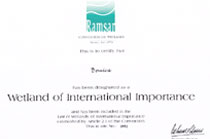 Slovakia has gradually included 13 most important wetlands on the List of Internationally Important Wetlands within the commitment of the Ramsar Convention on Wetlands (adopted on 2nd February 1971 in Iranian city of Ramsar), ratified by the Slovak Republic in 1990. One of them is the Domica Ramsar Site, which was included on the list on 2nd February 2001 as the 12th Ramsar site in Slovakia (number 1051 in the list). The preparation was shared by the Ministry of the Environment, Slovak Caves Administration and State Nature Conservation.
Slovakia has gradually included 13 most important wetlands on the List of Internationally Important Wetlands within the commitment of the Ramsar Convention on Wetlands (adopted on 2nd February 1971 in Iranian city of Ramsar), ratified by the Slovak Republic in 1990. One of them is the Domica Ramsar Site, which was included on the list on 2nd February 2001 as the 12th Ramsar site in Slovakia (number 1051 in the list). The preparation was shared by the Ministry of the Environment, Slovak Caves Administration and State Nature Conservation.
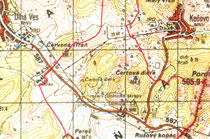 It represents the category “Karst and other subterranean hydrological systems, inland” in the framework of the classification system according to which it was designated as the second after the Škocjanske Caves in Slovenia. There are seasonal wet terrain depressions filled with water that can be classified as “Seasonal/intermittent freshwater marshes/pools on inorganic soils” within its surface part. (flat depression of the Smradľavé Lake, shallow wet depressions on the top of the Bodvianska Upland).
It represents the category “Karst and other subterranean hydrological systems, inland” in the framework of the classification system according to which it was designated as the second after the Škocjanske Caves in Slovenia. There are seasonal wet terrain depressions filled with water that can be classified as “Seasonal/intermittent freshwater marshes/pools on inorganic soils” within its surface part. (flat depression of the Smradľavé Lake, shallow wet depressions on the top of the Bodvianska Upland).
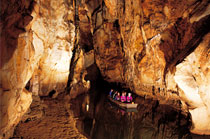 The locality was included among the internationally important wetlands on the basis of two basic criteria. The territory represents a rare, representative and unique example of natural or near-natural wetland type found within the territory of whole Europe. The specific conditions of underground karst system and its waters support the life of many rare, vulnerable and endangered species of terrestric and aquatic cave animals (pseudoscorpion Eukoenenia spelaea, beetle Duvalius hungaricus, amphipod crustacean Niphargus tatrensis and others).
The locality was included among the internationally important wetlands on the basis of two basic criteria. The territory represents a rare, representative and unique example of natural or near-natural wetland type found within the territory of whole Europe. The specific conditions of underground karst system and its waters support the life of many rare, vulnerable and endangered species of terrestric and aquatic cave animals (pseudoscorpion Eukoenenia spelaea, beetle Duvalius hungaricus, amphipod crustacean Niphargus tatrensis and others).
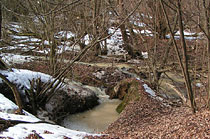 The Ramsar Site Domica with total area of 621,76 ha includes the Slovak part of the cave system Domica – Baradla with its drainage area. The total length of this cross-border Slovak-Hungarian cave system is 25 km (also a part of the world natural heritage of UNESCO). The measured length of the Čertova diera – Domica system in Slovakia is 5,358 m. The national nature reserve Domica is located on the southwestern edge of the Silická Plateau, in the territory of the Slovak Karst National Park and Biospheric Reserve, in the cadastres of Kečovo and Dlhá Ves.
The Ramsar Site Domica with total area of 621,76 ha includes the Slovak part of the cave system Domica – Baradla with its drainage area. The total length of this cross-border Slovak-Hungarian cave system is 25 km (also a part of the world natural heritage of UNESCO). The measured length of the Čertova diera – Domica system in Slovakia is 5,358 m. The national nature reserve Domica is located on the southwestern edge of the Silická Plateau, in the territory of the Slovak Karst National Park and Biospheric Reserve, in the cadastres of Kečovo and Dlhá Ves.
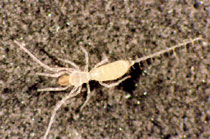 The territory has individual hydrological settings on the contact of karst (Silická Plateau) and non-karst territory (Bodvianska Upland). The surface river network consists of only occasional streams after intensive rainfall and snow melting. The precipitation water sinks underground through several ponors, where seasonal water courses are formed (Styx and Domický Brook). Their corrosion and erosion activities along the tectonic faults have gradually created the whole cave system. A part of it is opened to public. The cave is known by rich flowstone fills as well as by important archaeological discoveries of the Bukk-Mountain Culture from the Neolithic (4,000 years B.C.).
The territory has individual hydrological settings on the contact of karst (Silická Plateau) and non-karst territory (Bodvianska Upland). The surface river network consists of only occasional streams after intensive rainfall and snow melting. The precipitation water sinks underground through several ponors, where seasonal water courses are formed (Styx and Domický Brook). Their corrosion and erosion activities along the tectonic faults have gradually created the whole cave system. A part of it is opened to public. The cave is known by rich flowstone fills as well as by important archaeological discoveries of the Bukk-Mountain Culture from the Neolithic (4,000 years B.C.).
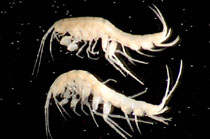 Locality protection is important also from the viewpoint of united genetic system of Domica – Baradla caves, to serve conservation or improvement of conditions for life not only on the Slovakian but also Hungarian side of this cross-boundary hydrological system. The Hungarian part is an independent Ramsar site directly adjacent to the Slovakian Domica Ramsar site.
Locality protection is important also from the viewpoint of united genetic system of Domica – Baradla caves, to serve conservation or improvement of conditions for life not only on the Slovakian but also Hungarian side of this cross-boundary hydrological system. The Hungarian part is an independent Ramsar site directly adjacent to the Slovakian Domica Ramsar site.
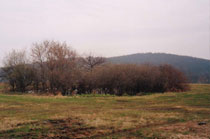 The care for the site resides in its effective protection aiming at elimination of negative factors threatening its natural values. It is connected with improvement of hydrological settings and prevention of water quality deterioration by the anthropogenic activities on the surface. A part of the care are research and monitoring works and educational activities helping the optimal use and protection.
The care for the site resides in its effective protection aiming at elimination of negative factors threatening its natural values. It is connected with improvement of hydrological settings and prevention of water quality deterioration by the anthropogenic activities on the surface. A part of the care are research and monitoring works and educational activities helping the optimal use and protection.
Dear visitors, visiting the cave requires adequate physical fitness.
The route includes:
- a longer walk in an enclosed darkened area
- reduced temperature and increased humidity
- ascent and descent
- higher number of steps (in some caves)
Special note to persons with medical limitations:
If you suffer particularly from cardiovascular disease, respiratory problems, high blood pressure, mobility limitations or are in poor physical condition, please consider taking part in the tour.
If you have any doubts about the appropriateness of your visit, please consult your doctor about your medical condition.
Your safety is of paramount importance to us.
Thank you for your understanding
Slovak Caves Administration, State Nature Conservation of the Slovak Republic
Dear visitors, we would like to inform you that due to the technical conditions of payment terminals, there may be situations when card payment will not be possible. For this reason, we recommend that you have an adequate amount of cash available if you want to be sure that you will be able to visit the cave. Thank you for understanding.
Dear visitors, due to technical reasons at the cave, it is not possible to provide food and drinks, including coffee vending machine services. We apologize for this inconvenience.
Dear visitors, the parking lot doesn't belong to cave administration. The fees are collected by different entity. Thank you for your understanding.